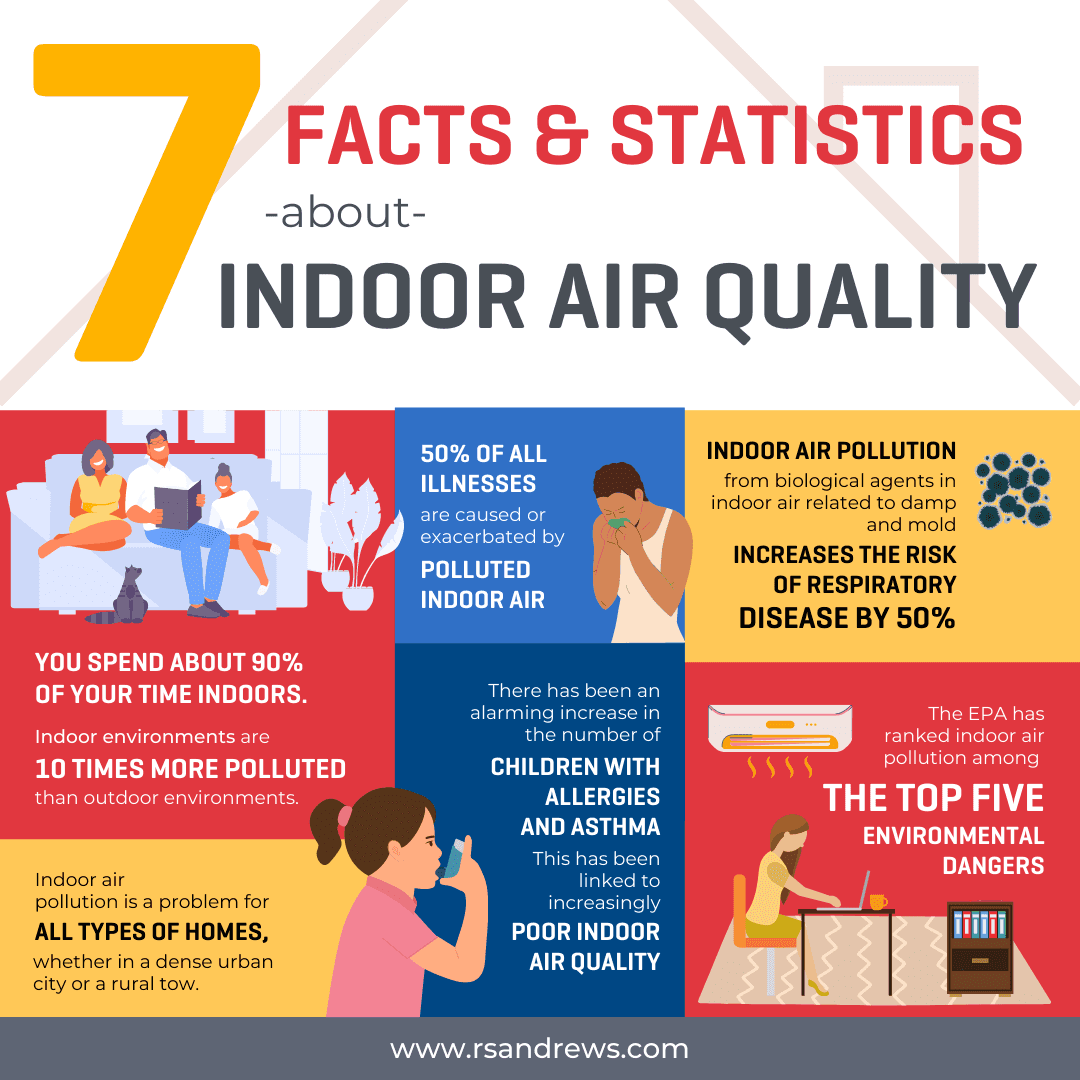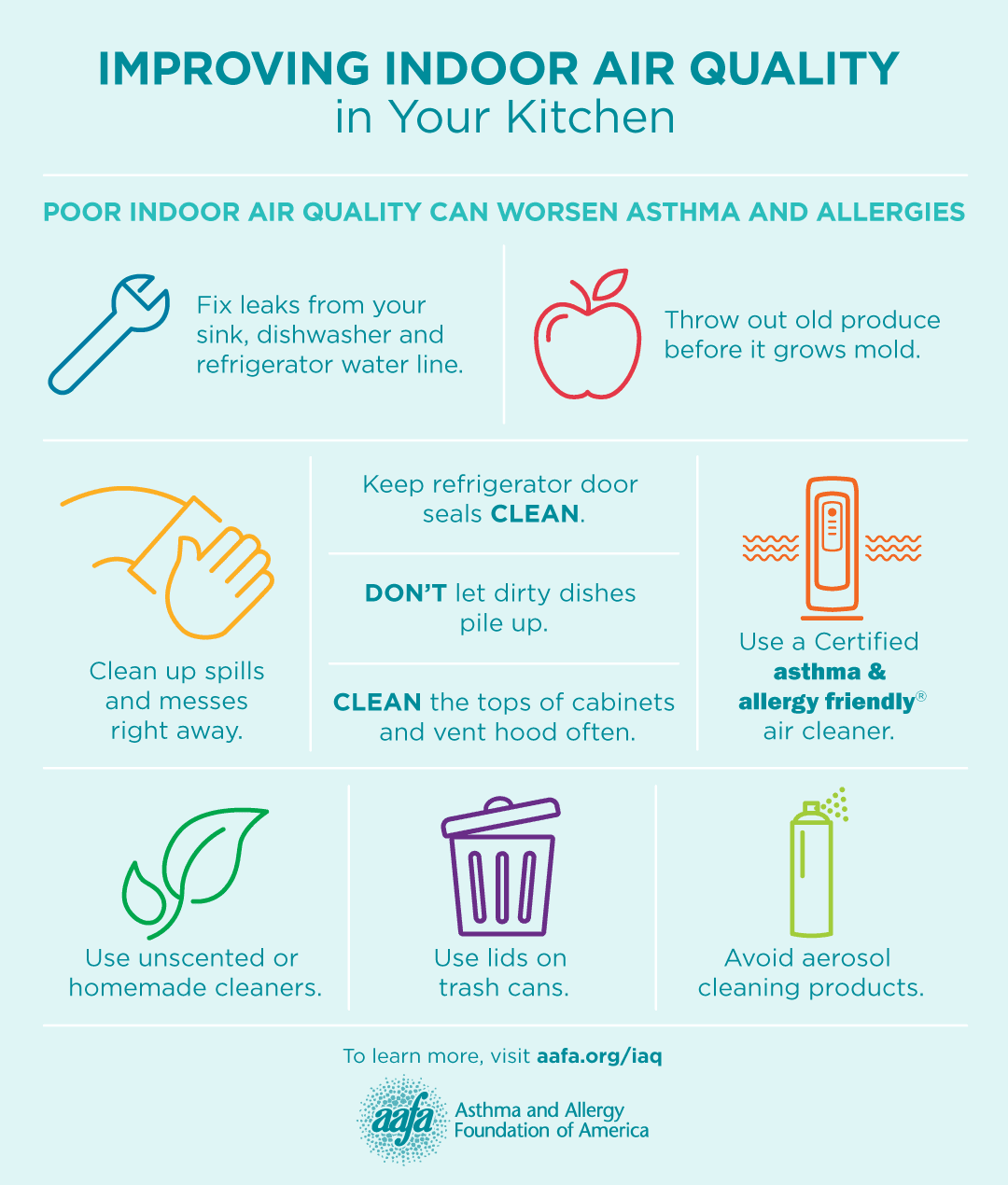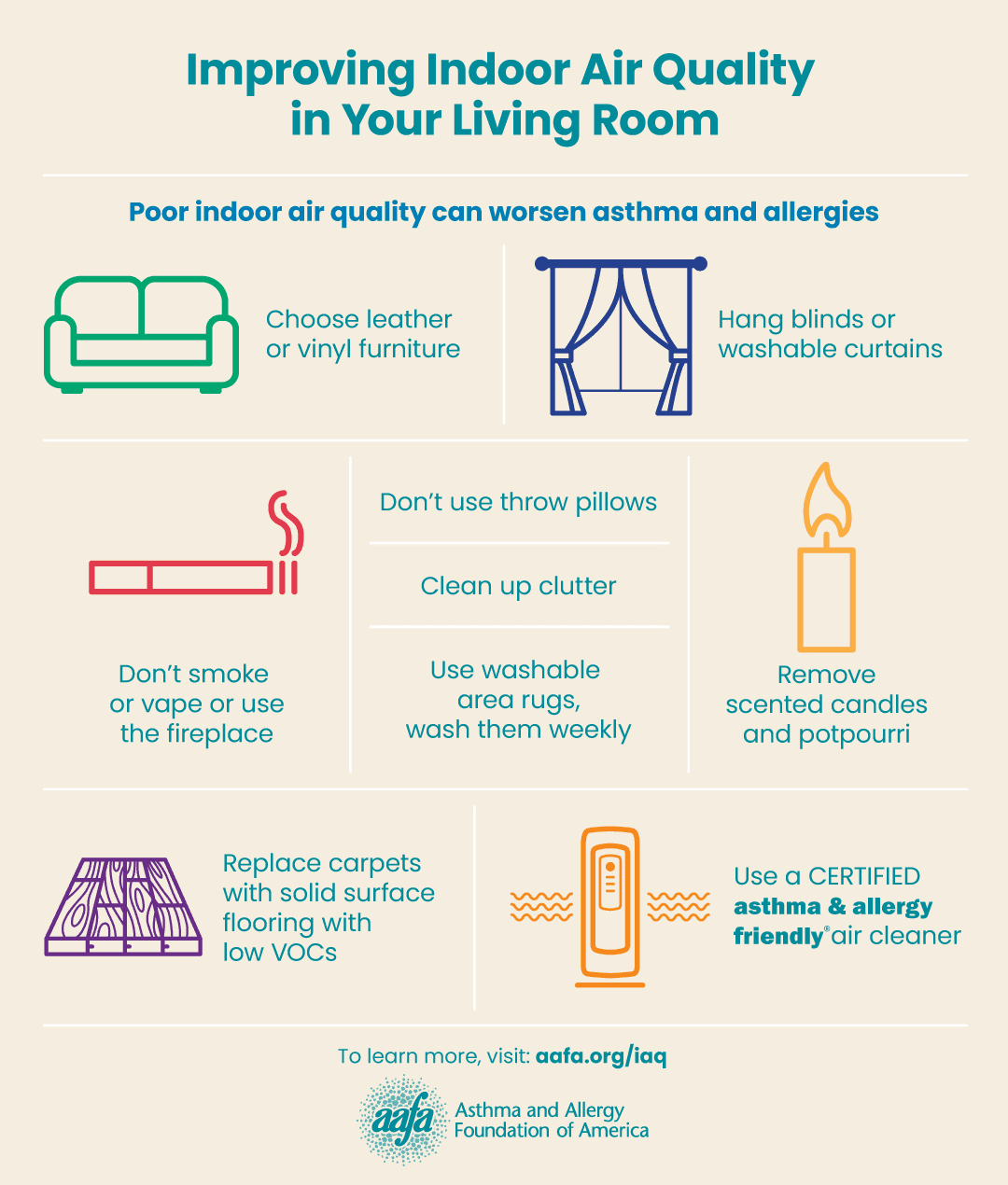Improving indoor air quality can greatly help people with hay fever. Simple changes can make breathing easier.
Hay fever sufferers know the struggle of indoor allergens. Pollen, dust mites, and pet dander can worsen symptoms. Reducing these irritants is key to comfort. Clean air helps reduce sneezing, itching, and congestion. In this blog post, we will explore effective ways to improve indoor air quality.
You’ll learn practical tips to create a healthier home environment. Let’s dive into simple steps to breathe easier and feel better indoors.
Introduction To Indoor Air Quality
Indoor air quality plays a crucial role in our health and well-being. For those with hay fever, maintaining clean air indoors is essential. Allergens in the air can trigger symptoms, making life uncomfortable. Understanding how to improve indoor air quality can help manage hay fever effectively.
Importance Of Clean Air
Clean air helps reduce the presence of allergens. Dust, pollen, and pet dander can accumulate indoors. These particles can trigger hay fever symptoms. Keeping the air clean is vital for comfort and health.
Using air purifiers can help. They filter out harmful particles. Regular cleaning also removes dust and allergens. Vacuuming carpets and washing bedding can reduce allergen levels. A clean home leads to better air quality.
Impact On Hay Fever Sufferers
Hay fever sufferers are sensitive to allergens. Poor indoor air quality can worsen symptoms. It can cause sneezing, itchy eyes, and a runny nose. In severe cases, it can lead to breathing difficulties.
Maintaining good air quality can provide relief. Reducing allergen exposure helps manage symptoms. It improves overall well-being. Sufferers can enjoy a more comfortable living environment. Paying attention to indoor air quality is key for hay fever management.

Credit: www.rsandrews.com
Common Indoor Allergens
Common indoor allergens can significantly affect people with hay fever. Understanding these allergens helps in managing symptoms more effectively. Here are some common indoor allergens that may trigger hay fever symptoms.
Dust Mites
Dust mites are tiny creatures found in almost every home. They thrive in warm, humid environments. Beds, carpets, and upholstered furniture are their favorite spots.
- Use allergen-proof bed covers.
- Wash bedding in hot water weekly.
- Maintain low indoor humidity.
Pet Dander
Pet dander consists of tiny skin flakes shed by cats, dogs, and other animals. These flakes can cause allergic reactions.
Even clean pets can contribute to indoor allergens.
- Keep pets out of bedrooms.
- Use HEPA filters in your home.
- Regularly groom and bathe your pets.
Mold
Mold grows in damp areas like bathrooms, kitchens, and basements. Mold spores can trigger hay fever symptoms.
Reducing moisture in the home is key to controlling mold.
- Fix leaks promptly.
- Use exhaust fans in damp areas.
- Clean moldy surfaces with appropriate cleaners.
Effective Ventilation
Good ventilation can help improve indoor air quality for people with hay fever. It allows fresh air to enter and stale air to leave. This reduces the concentration of allergens inside the home. Below are some effective ways to improve ventilation.
Using Exhaust Fans
Exhaust fans help remove indoor pollutants. Install them in kitchens and bathrooms. These areas often have higher humidity and pollutants. Turn on the fans while cooking or showering. This will help reduce moisture and allergens.
Opening Windows
Opening windows is a simple way to improve air quality. It lets fresh air in and stale air out. Open windows for at least 15 minutes each day. Do this when pollen levels are low. This method helps reduce indoor allergens.

Credit: probreeze.com
Air Purifiers And Filters
Improving indoor air quality is crucial for people with hay fever. Air purifiers and filters play a vital role in this process. They help remove allergens and pollutants from the air, making it easier to breathe. Let’s explore some effective options for enhancing your indoor environment.
Hepa Filters
HEPA filters are highly effective in capturing tiny particles. They trap dust, pollen, and other allergens. This makes them perfect for people with hay fever. A good HEPA filter can remove up to 99.97% of airborne particles. This ensures cleaner air and fewer allergy symptoms.
Activated Carbon Filters
Activated carbon filters work differently. They absorb odors and gases. This includes smoke, chemicals, and volatile organic compounds (VOCs). These filters are excellent for improving air quality. They help create a fresher, healthier living space.
Regular Cleaning Practices
Regular cleaning practices can significantly improve indoor air quality for people with hay fever. Consistent cleaning reduces allergens like dust, pollen, and pet dander. This can help alleviate hay fever symptoms and create a healthier environment.
Vacuuming
Vacuuming is essential for maintaining clean floors and carpets. Use a vacuum with a HEPA filter to trap allergens. Aim to vacuum at least twice a week. Focus on high-traffic areas and places where pets spend time. Don’t forget to clean under furniture and in corners.
Dusting Surfaces
Dusting surfaces helps remove allergens from furniture, shelves, and decorations. Use a damp cloth or microfiber duster to trap dust. Dry dusting can spread allergens into the air. Dust surfaces at least once a week. Pay special attention to hard-to-reach areas and electronics.
Controlling Humidity Levels
Controlling humidity levels is crucial for improving indoor air quality, especially for those with hay fever. High humidity can worsen hay fever symptoms by promoting mold growth and dust mites. Keeping humidity at the right level can help reduce these triggers and make your home more comfortable.
Using Dehumidifiers
Dehumidifiers are effective tools for managing humidity levels. They work by removing excess moisture from the air. This helps maintain a healthier indoor environment. Here are some tips for using dehumidifiers effectively:
- Place dehumidifiers in damp areas like basements and bathrooms.
- Set the humidity level between 30% and 50%.
- Empty the water tank regularly to prevent mold growth.
- Clean the filters as recommended by the manufacturer.
Preventing Mold Growth
Mold can trigger hay fever symptoms. Keeping humidity under control helps prevent mold. Here are steps to prevent mold growth:
- Fix leaks in roofs, walls, and plumbing promptly.
- Ensure proper ventilation in bathrooms and kitchens.
- Use exhaust fans to reduce moisture during cooking and showering.
- Clean and dry any damp areas within 24 to 48 hours.
By controlling humidity levels, you can create a healthier home for people with hay fever. Use dehumidifiers and take steps to prevent mold growth. This will help reduce hay fever triggers and improve indoor air quality.
Choosing Allergy-friendly Furnishings
Choosing the right furnishings can significantly improve indoor air quality for those with hay fever. Allergy-friendly furnishings reduce allergens and provide a healthier environment. Proper selection can make a big difference in comfort and health.
Hypoallergenic Bedding
Hypoallergenic bedding can help reduce allergens in the bedroom. Choose bedding made from materials like organic cotton or bamboo. These materials resist dust mites and other allergens. Wash bedding frequently in hot water. This removes allergens and keeps the environment clean.
Non-toxic Paints
Non-toxic paints are essential for maintaining good air quality. Traditional paints release volatile organic compounds (VOCs). These compounds can irritate allergies and asthma. Opt for paints labeled “low-VOC” or “VOC-free.” These paints have fewer harmful chemicals. They help create a healthier living space.

Credit: community.aafa.org
Natural Remedies And Solutions
Improving indoor air quality is crucial for those with hay fever. Fortunately, natural remedies and solutions can help. These methods are safe and effective. They offer relief from hay fever symptoms. Let’s explore two such remedies: essential oils and indoor plants.
Essential Oils
Essential oils can improve air quality. They can also reduce hay fever symptoms. Popular options include:
- Lavender Oil: Known for its calming effects. It reduces inflammation and allergy symptoms.
- Eucalyptus Oil: Helps clear nasal passages. Its anti-inflammatory properties are beneficial.
- Peppermint Oil: Contains menthol. It soothes respiratory issues and reduces congestion.
Use a diffuser to disperse these oils. This method spreads the oils throughout the room. Alternatively, add a few drops to a bowl of hot water. Inhale the steam for instant relief.
Indoor Plants
Indoor plants can purify the air. They remove toxins and allergens. Some of the best plants for this purpose are:
| Plant | Benefits |
|---|---|
| Spider Plant | Removes toxins like formaldehyde. Easy to care for. |
| Peace Lily | Filters out mold spores. Also removes toxins. |
| Bamboo Palm | Great for removing benzene and trichloroethylene. Adds moisture to the air. |
Place these plants in different rooms. They will continuously improve air quality. Ensure they get enough light and water. Healthy plants are more effective in purifying the air.
Preventive Measures
Hay fever can make staying indoors uncomfortable. Implementing preventive measures can significantly improve indoor air quality. These measures can help reduce allergens and provide relief for those suffering from hay fever.
Limiting Outdoor Allergens
To improve air quality indoors, start by limiting the entry of outdoor allergens. Here are some effective strategies:
- Keep windows and doors closed during high pollen seasons.
- Use air purifiers with HEPA filters to trap pollen particles.
- Place doormats at entrances to reduce dirt and pollen brought indoors.
- Shower and change clothes after spending time outside.
- Avoid drying clothes outdoors during pollen seasons.
Maintaining Hvac Systems
Proper maintenance of your HVAC system is crucial for reducing allergens indoors. Follow these tips to ensure your system is working efficiently:
- Replace HVAC filters regularly, preferably every three months.
- Use high-efficiency particulate air (HEPA) filters in your HVAC system.
- Schedule annual HVAC inspections to check for mold and dust buildup.
- Ensure that ducts are clean and free from debris.
- Consider installing a whole-house air purifier for enhanced air quality.
Implementing these preventive measures can greatly improve indoor air quality and provide comfort for those with hay fever.
Conclusion And Additional Resources
Improving indoor air quality can ease hay fever symptoms. Following practical tips and having access to reliable resources can make a big difference. This section provides a summary of the tips discussed and additional resources for further reading.
Summary Of Tips
- Keep windows closed: Prevent pollen from entering your home.
- Use air purifiers: Choose HEPA filters to trap allergens.
- Clean regularly: Reduce dust and other particles.
- Wash bedding: Do this weekly in hot water.
- Control humidity: Use dehumidifiers to avoid mold growth.
- Avoid smoking: Keep your home smoke-free.
- Use natural cleaners: Reduce chemical exposure.
Helpful Websites And Books
| Resource | Description |
|---|---|
| EPA Indoor Air Quality | Government resource on improving indoor air quality. |
| Asthma and Allergy Foundation of America | Information on managing allergies and asthma. |
| Mayo Clinic | Comprehensive health information, including hay fever. |
| The Allergy Solution by Leo Galland, M.D. | A book on understanding and treating allergies. |
| Allergies: Fight Them with the Blood Type Diet by Dr. Peter J. D’Adamo | Explores dietary approaches to managing allergies. |
Using these resources, you can learn more about improving indoor air quality and managing hay fever effectively.
Frequently Asked Questions
What Are Common Indoor Allergens For Hay Fever Sufferers?
Common indoor allergens include dust mites, pet dander, mold spores, and pollen brought in from outside.
How Can I Reduce Indoor Allergens?
Regularly clean and vacuum your home, use air purifiers, and wash bedding in hot water to reduce allergens.
Do Air Purifiers Help With Hay Fever?
Yes, air purifiers with HEPA filters can effectively capture pollen, dust, and other allergens, improving indoor air quality.
What Plants Improve Indoor Air Quality?
Spider plants, peace lilies, and snake plants can improve indoor air quality by filtering out common pollutants.
Conclusion
Improving indoor air quality can greatly ease hay fever symptoms. Regular cleaning helps reduce allergens. Using air purifiers can make a big difference. Keep windows closed during high pollen times. Houseplants can also help purify air. Simple steps lead to better breathing.
Try these tips for a healthier home environment. Your nose and lungs will thank you.
Rakib Sarwar is a Registered Pharmacist and a reputed health and wellness blogger. He has a great interest in Air purifiers.
